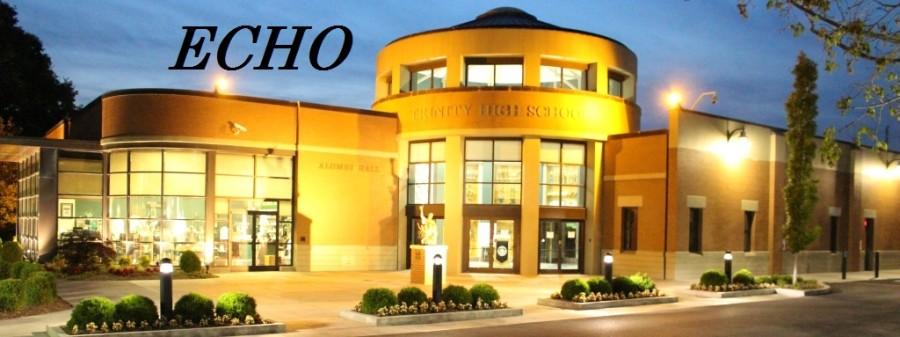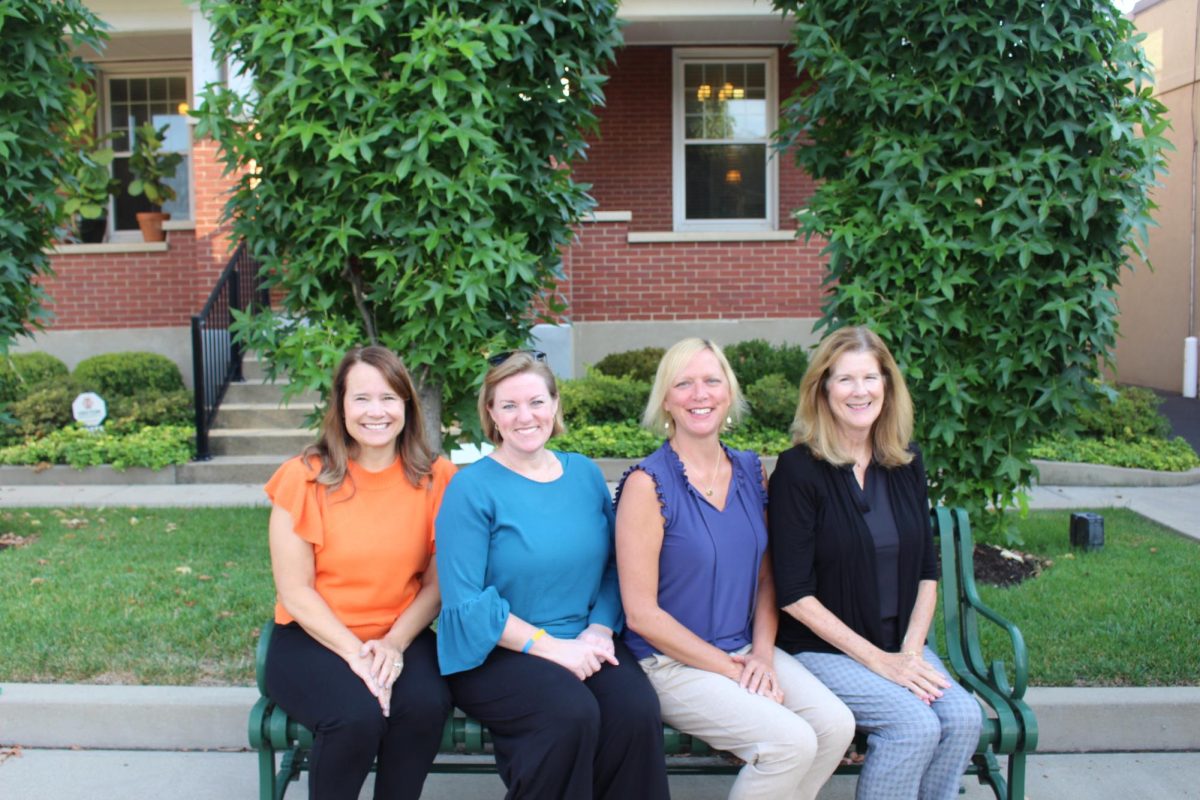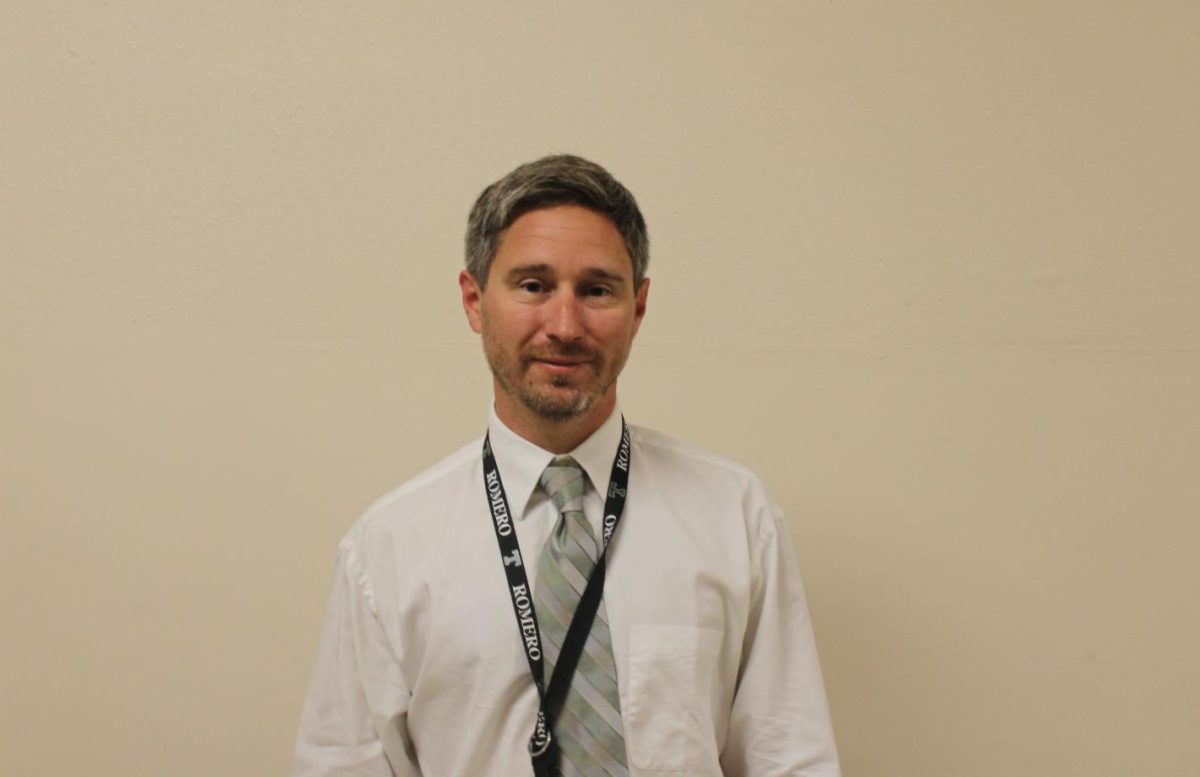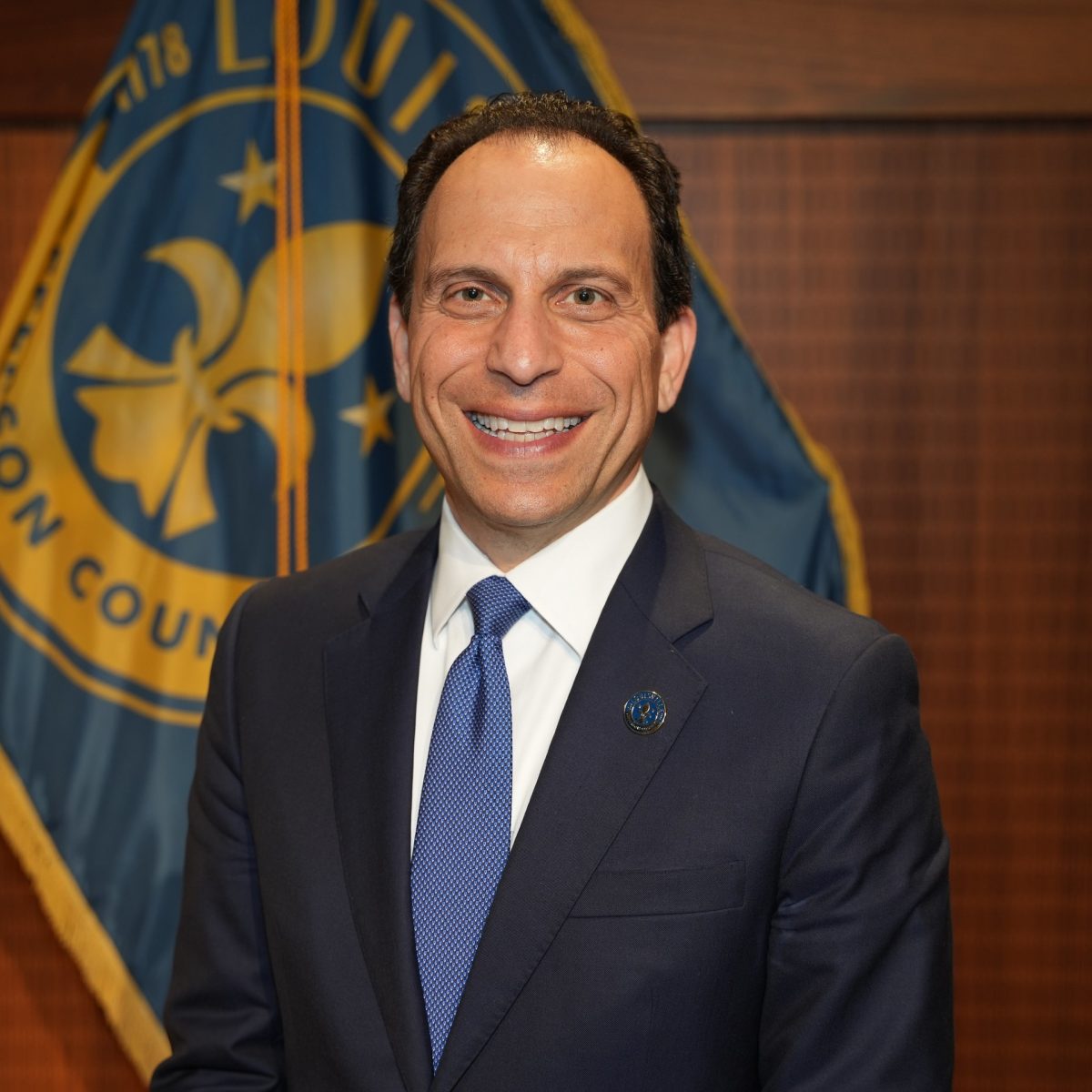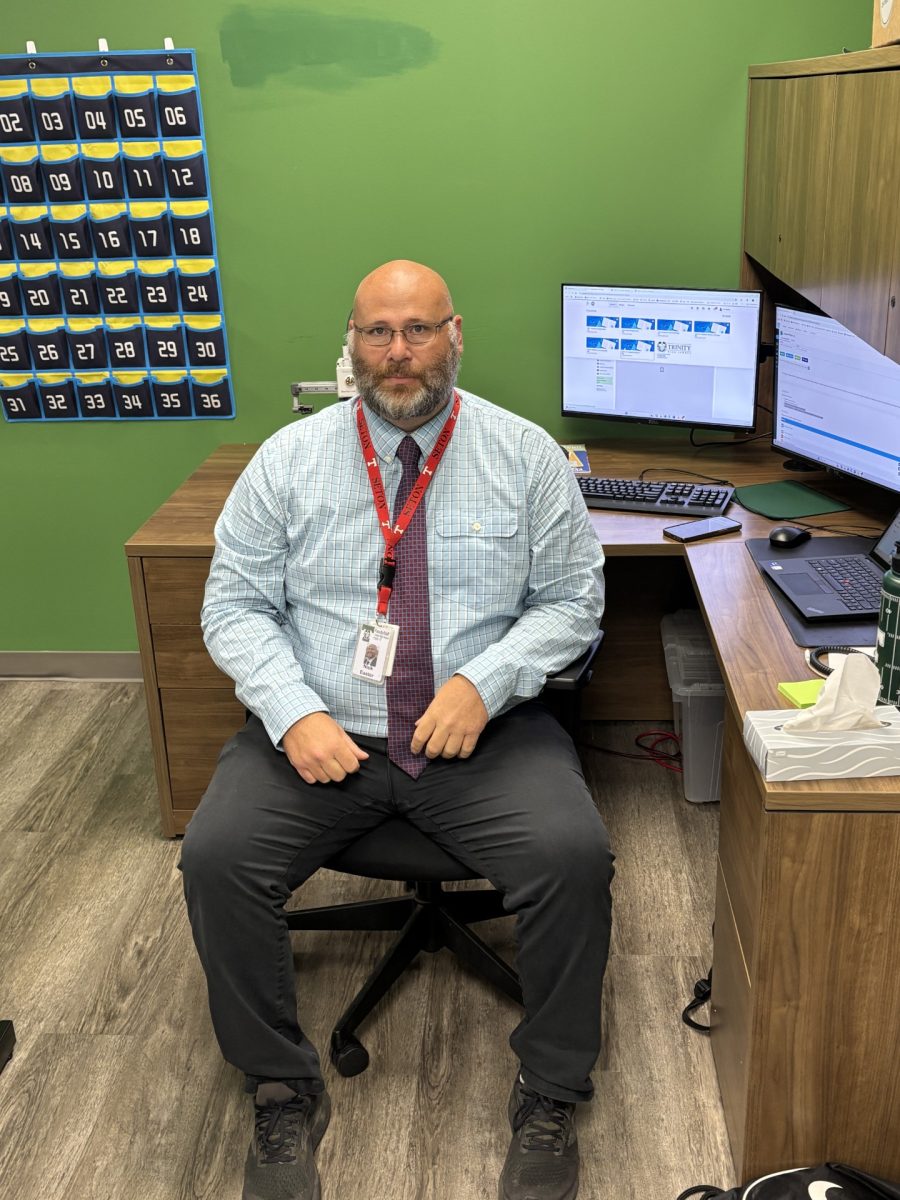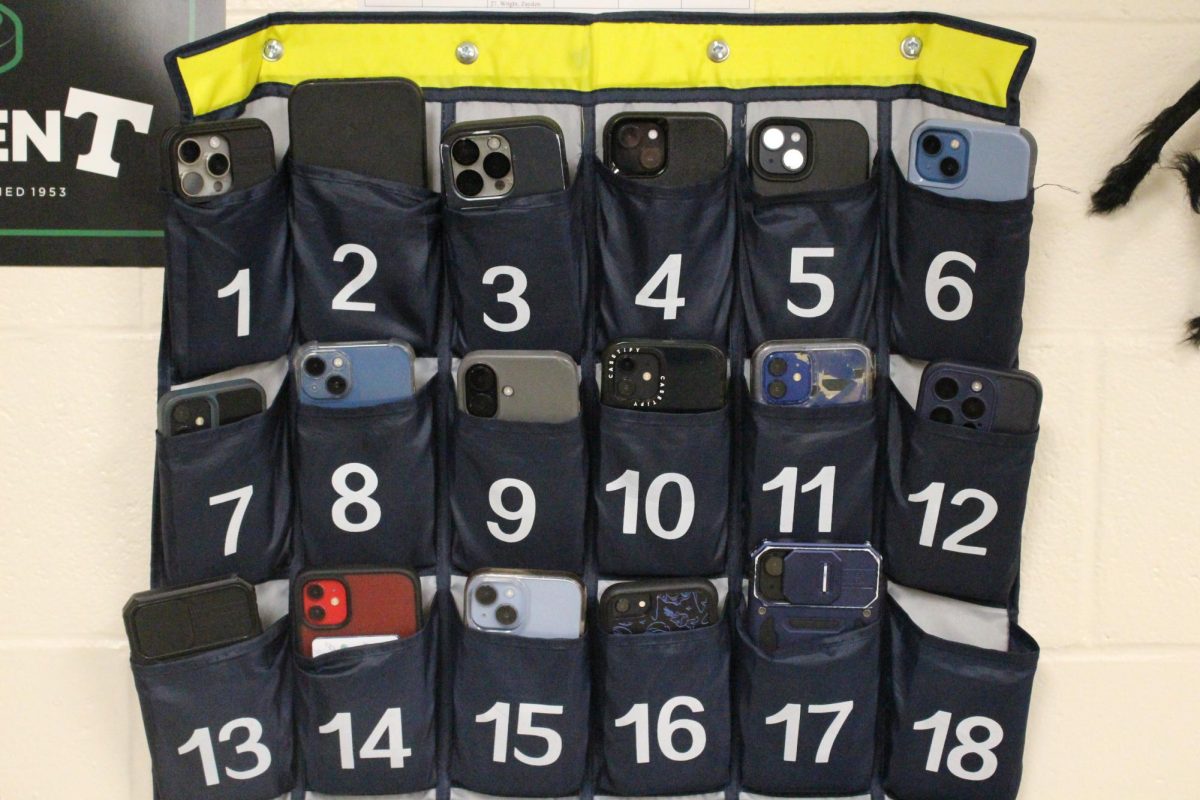There’s a good chance two out of five students might not be sitting in a Trinity classroom if the Trinity High School Foundation didn’t exist.
The non-profit Foundation, located in the “priest house” between the cafeteria and Old Trinity Hall wants the Trinity legacy to continue by making the school accessible to students and prospective students.
“Anything that will help support the school’s mission, that’s what we’re here for,” said Mr. Tim Culver, director of major gifts for the Foundation. “We’re out there on a daily basis trying to drum up support so that future students will have access to a Trinity education.”
The Trinity Foundation is a separate entity from Trinity High School, and while it collaborates with the School Board, it has a separate board of directors that is comprised of alumni, current parents and past parents. Dr. Rob Mullen, President of the School, is also President of the Foundation.
Culver and a three-person staff serve the Foundation, which conducts the Trinity Annual Fund to raise money for financial aid. The Foundation also seeks to grow the school’s endowment, which helps pay for 67 scholarships and provides the funds to take care of Trinity’s growing campus, including its buildings.
Culver’s team includes annual fund director Brian Monell ’86, associate director Michelle Walters, and administrative assistant Sandy Camerucci.
THE TRINITY ANNUAL FUND
The annual fund is raised through phone calls and contacting alumni and parents. The money collected is made available the following year for financial aid.
That money is used each year to defray the costs of attending Trinity for everyone.
“If there wasn’t a Foundation tuition would be about $2,000 more for every family than what it is now,” Mullen said.
But the Annual Fund also provides money to give additional support to families who need it. Next fall, there will also be 67 scholarships that will be distributed to more than 100 students.
Many of those scholarships have been set up by and funded by alumni. Trinity currently has roughly 20 alumni class scholarships that are distributing financial aid or in the process of raising money so they can. The classes of 1957, 1958, 1959, 1973, 1976, and 1978, among others, distribute more than one scholarship to students each year.
Each class has different reasons for collecting money for their scholarship, but for the class of 1973, it was showing appreciation for those who made sacrifices to send them to Trinity.
“I think we tugged on a lot of heart strings when part of the deal was making sure the family member or whoever helped you make it through Trinity got a letter saying that this money was donated dedicated to you,” said class member Dr. Glenn Blincoe, of Blincoe & Shutt Dentistry in Louisville. “That was what steered everyone’s interest.”
Mr. Tony Wagner, a St Xavier graduate, started a scholarship with his family in honor of his brother Andy Wagner – a 2003 Trinity graduate who died in a car accident in 2007.
“This was a terrible nightmare for our family that we did not share alone,” Wagner said at the 2013 scholarship dinner. “Our Trinity family came to be with us when we needed it the most. Even seven years later they haven’t left our side. The Trinity community made it possible for us to go on each day. We couldn’t be more proud to be in the Trinity community.”
After Andy’s death, the family wanted to give back to the school. The Andy Wagner Foundation was created so that Andy’s spirit continues to live on in the community forever.
The annual Andy’s Run fundraiser, a run/walk event that starts and ends on the 44-yard line of the Marshall Stadium field, to commemorate his jersey number, has been successful raising $95,000, which has gone to the scholarship endowment as well as various charities.
THE PROCESS
Students who receive a Foundation scholarship are first pre-qualified by the school, which uses a company in Ohio to process the applications. The firm, called Private School Aid Service, sends a report back to the school that shows all the families that have a demonstrated need for assistance and how much that need is.
Meanwhile, the Foundation sends the criteria for each scholarship to all faculty and staff. It asks them to nominate as many students that meet the criteria. Teachers make the recommendations without reference to the students’ financial need.
The Foundation creates a spread sheet with the names of students who have been nominated and then works with the business office to find out whose need is greatest among those who have been nominated.
“If I have a dozen students nominated for one scholarship, I will rank them by order of greatest need,” Culver said. “Whoever has the greatest need will be awarded that scholarship. Our aid is part of the financial aid package, not in addition to. If a family is told it’s getting ‘X’ number of dollars, a portion of that is made possible through one of these scholarships.”
Trinity has been occasionally accused of using the scholarships to recruit especially talented athletes, but Culver said that’s not the case.
“It’s not true – bottom line,” Culver said. “It’s a third-party, outside business that processes the financial aid applications. They have no idea who these people are. All I look at are numbers and who has the greatest need. It’s a very rigid process. The third party has no idea who these people are. It just says here’s this family, and here’s their need. If the student is nominated from this particular family and they have the greatest need, that’s who we choose.”
That’s not to say some of the recipients may be athletes, but that’s not what the scholarship is based on. The Foundation makes it clear to anybody creating a scholarship that it can’t require a recipient to play a specific sport, and it can’t stipulate an athlete gets a scholarship.
PHYSICAL PLANT
The Foundation does more than hand out scholarship money. It also works to build and maintain the property of Trinity High School through the raising of funds for projects. In fact, it technically owns the campus itself, Culver said.
“When you look at the building of Marshall Stadium, Duerr Hall, or any other annual maintenance, it’s done through the Foundation,” Culver said.
“The challenge has been finding green space,” he added. “And there’s not more being created.”
The baseball field on River Road, located at Thurman Hutchins Park, has been a major undertaking by the Foundation, to improve the field and include things like the press box and storage unit. The field is owned by the City of Louisville.
Trinity’s baseball field, track and tennis locations are all off campus. While this isn’t ideal, Culver said the Foundation has been working to build out their locations and has fielded great teams in the process.
“It has been a challenge, but we’ve been able to make it work,” he said.
Funds for field projects and property acquisitions are made possible through alumni, parents, past parents, and corporations, if it’s the right fit. Companies like Brown-Forman and Humana will match their employees’ gifts.
INVESTING THE MONEY TO MAKE ALL THIS WORK
Money for scholarships, unlike the Annual Fund, isn’t made available the following year. Instead, the money is put into an endowment that acts like a savings account. Some of the endowment earnings are distributed, but some are kept in perpetuity in investments to keep gaining more money.
The Foundation takes the rolling three-year average of the endowment earnings and distributes up to five percent of the earnings each year. The rest of the money is invested to protect the principle of the endowment.
“So long after we’re long gone, they’ll still be giving out money,” Culver said.
The goal of the Foundation is to have $25 million in the endowment by 2020. Right now the group is on target to meet that goal.
In the current school year, the Foundation distributed more than $2.5 million in financial assistance, including not only through scholarships, but also the Annual Fund made possible by donors.
Families of Trinity students receiving some type of assistance is 40 percent, with a little more than 60 percent of a family’s demonstrated need taken care of.
“Our current freshman class entered Trinity after attending 68 different grade/middle schools,” Mullen said in the spring edition of The Leader. “They come from numerous surrounding counties, five states and five countries other than the United States. Be it academics, financial standing, creed, race, ethnicity or geography – add it all up and we are sustaining a school where all are welcomed and respected.”

